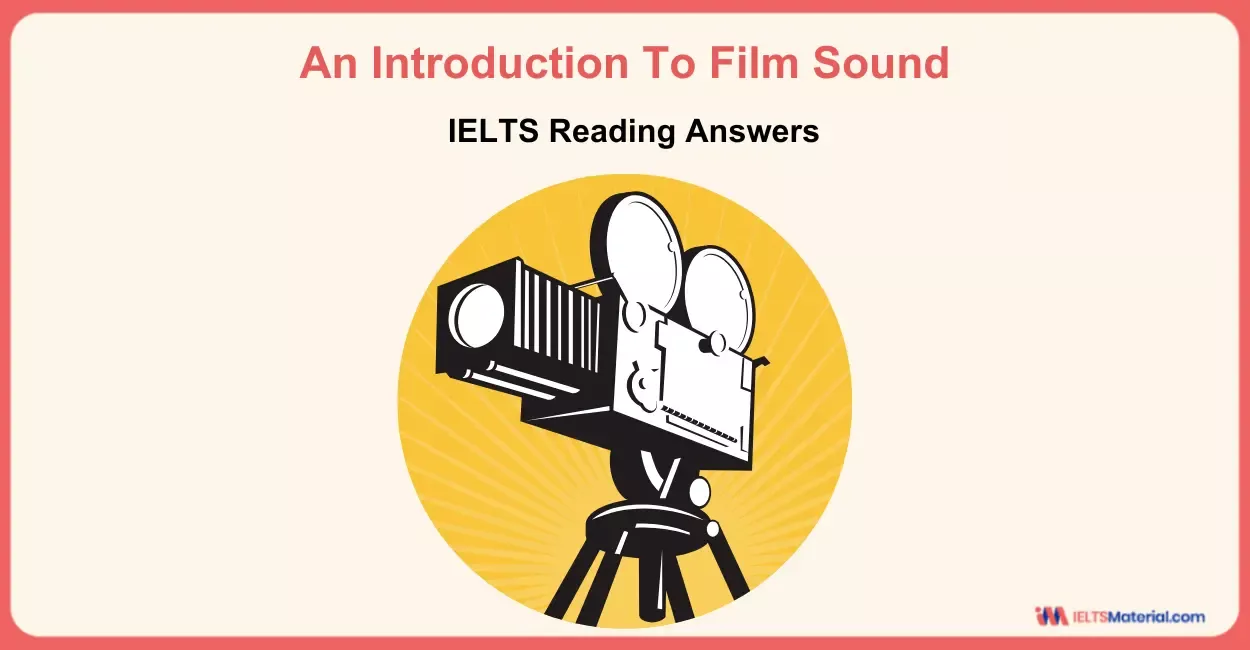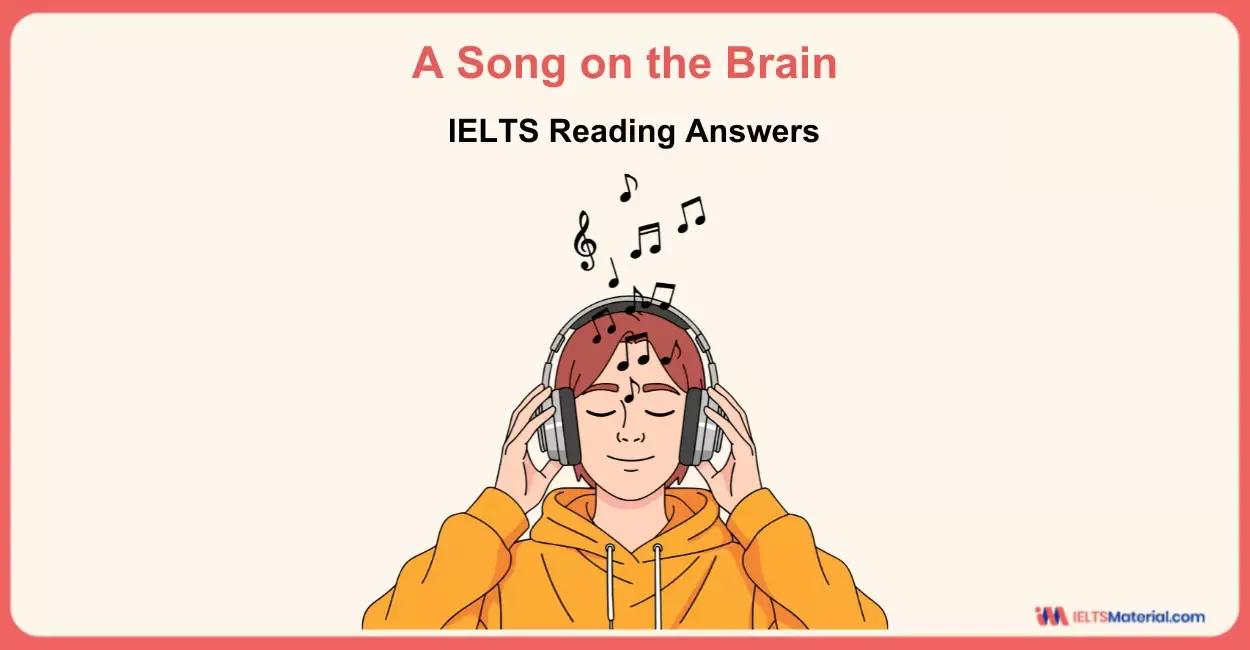Style Shifting – IELTS Reading Answers
13 min read
Updated On
-
Copy link
Want to improve reading comprehension skills? Prepare with the IELTS Reading passage on ‘Style Shifting’ and get familiar with the strategies to answer 13 questions within 20 minutes. Check out the answers, explanations, and more to boost confidence.
Table of Contents

Limited-Time Offer : Access a FREE 10-Day IELTS Study Plan!
The IELTS Academic Reading consists of 40 questions divided over three passages, similar to the topic, ‘Style Shifting’. Some exam-takers struggle to finish the test within 60 minutes. By practicing this passage, you would be able to provide more precise answers to True/False/Not Given, Matching Features, and Multiple-Choice questions. This will improve your skills such as scanning and skimming to find the specific information, critical thinking to differentiate between implied and actual meanings, and logical reasoning to connect statements. By consistently practising with the IELTS Reading passages, you will become confident and acquire the skills in which understanding academic texts are crucial.
Connect with our band 9 IELTS Trainers to crack your IELTS Reading in no time! Book a FREE Demo.
Types of Questions in IELTS Reading Passage ‘Style Shifting’
As you attempt the passage on ‘Style Shifting’, you must first get familiar with the types of questions. In this topic, you will encounter 13 questions. Remember to always check out the questions before reading the passage as that would help you point out the specific strategies to be incorporated. The question types found in this passage are mentioned below:
- IELTS Reading True False Not Given (Q. 1-6)
- IELTS Reading Matching Features (Q. 7-12)
- IELTS Reading Multiple-Choice Question (Q. 13)
How to Answer the IELTS Reading Passage ‘Style Shifting’?
Since Time Management for IELTS Reading play a pivotal role, you must incorporate a few strategies for each question type. With this technique, you will be able to identify keywords, interpret information, and also build confidence in answering. Below are some of the tips which you can incorporate for each question type for the passage on ‘Style Shifting’.
|
Question Types |
Strategy |
|
True/ False/ NotGiven |
|
|
Matching Features |
|
|
Multiple Choice Questions |
|
Curious to learn how to improve your reading skills to get a band 9? Check out the video below!
IELTS Reading Passage on ‘Style Shifting’
You should spend about 20 minutes on Questions 1-13 which are based on the Reading Passage below.
Style Shifting
A How do we recognize an individual’s personal style? We may initially think of the way people dress, their hairstyle, or even the vehicle they drive. But a crucial part of a person’s style is the way they speak. How we talk can tell other people a lot about ourselves or who we would like to be. It can be a strong indication of where we are from, our level of education and our age, and it can also reveal a lot about how we view the situation in which we are speaking. Because we are largely unaware of our language production and language behaviour, we are often not conscious of features in our language that give away which social groups we belong to or even which values we hold. On the other hand, we may be very aware of the linguistic features that are characteristic of another social group, and we may consciously choose to adopt those language features to indicate that we are part of that group – or would like to be, at least. One thing is clear: an individual can change their linguistic style just as easily as they can change their fashion style or hairstyle, if not more easily. This ability to change language style is called style shifting and it happens all the time.
B Style shifting is not an addition to how we normally speak; in fact, you could say that it is impossible to speak without any style. When we speak, we are making several choices within fractions of a second; choices regarding vocabulary, pronunciation, intonation, grammar, sentence length and dialect. Mostly these choices are unconscious and have been learnt in childhood. The most noticeable of the language features that we learn unconsciously are determined by the place where we grow up and may include the vocabulary and grammar patterns of the dialect spoken in that area.
C Other choices are conscious and may be tied to our work; newsreaders or teachers, for example, may speak in a certain way due to their jobs. Personal language style is therefore an individual version of the typical behaviour of a social group and is acquired along with the culture of the group. Moreover, as we grow up and come into contact with other social groups, we continually adjust our speech to the audience, situation and topic.
D So, style shifting is the change we make, consciously or unconsciously, to our personal language depending on the circumstances. And how do we shift our linguistic style? The most common moves are from casual to formal or vice versa. Casual to formal shifts happen in specific contexts and in certain social groups. They are marked by a reduction in certain features of casual speech, such as the use of double negatives or slang words. They are also marked by hypercorrection. Hypercorrection is the overuse of a perceived rule from a more ‘prestigious’ variety of the language. An example from English is as follows: instead of saying ‘There’s no difference between you and me’, a style shift to more formal speech would be ‘There’s no difference between you and I’. Conversely, a shift from formal to informal will be marked by greater use of informal speech features. Another type of style shift occurs when we change our style in response to our audience. An example is when an adult speaks to a baby in ‘baby language’, or again, when a newsreader stops using their personal speech style and begins to use their ‘newsreader’ style.
E There are a number of theories for why people change their personal speech style. The first was put forward by William Labov in the 1960s. Labov studied the speech patterns of people in New York, and in particular the pronunciation of Ir/ – the inclusion of this sound being seen as high status. Labov found that because people were aware of the higher status of this sound, when they were asked to do a task that needed their attention such as reading aloud, they were more likely to produce the sound. On the other hand, when asked to do something which involved their emotions, like telling a story, they paid less attention to the sound. This is called the Attention to Speech model. Another theory, the Communication Accommodation Theory, developed by Howard Giles in the 1970s, says that style shift may be convergent, i.e. it moves closer to the speech style of the person or people with whom we are talking, or it may be divergent, i.e. it moves away from the other person’s speech style. The shift is most commonly convergent when people find similarities in their background, social class or even shared interests and likes. In a later theory, the role of the other speaker or audience is emphasised further. In 1984 Allan Bell proposed the Audience Design Model. In this theory, individuals shift their style to win the approval of the people they are speaking to.
F Whatever reason is closest to the truth, whether we pay more attention to how we say something, express social solidarity or seek the approval of our audience, it is clear that everyone possesses the ability to change their language identity according to who they are speaking to and how they would like to project themselves.
Questions 1-6
Do the following statements agree with the information given in the Reading Passage? Write
TRUE if the statement agrees with the information
FALSE if the statement contradicts the information
NOT GIVEN if there is no information on this
1 We are usually aware of the way we use language in our speech.
2 If we wanted to, we could speak in a neutral style.
3 Our language choices happen virtually instantaneously.
4 Some people use certain styles of speech as part of their job.
5 Informal to formal style shifting features a greater use of personal pronouns.
6 Labov’s experiments included asking people to read a text out loud.
Questions 7-12
Write the correct letter, A, B or C, next to Questions 7-12.
Classify the following as part of:
|
7 reading aloud
8 showing you are similar to someone by shifting your speech style to theirs
9 narrating
10 trying to gain your listener’s acceptance
11 including a particular sound
12 moving your speech style away from the other person’s
Question 13
Choose the correct option A, B, C or D.
13 Which of the following is NOT an example of style shift?
- being unaware of your speech style
- changing pronunciation features
- using unusual sentence patterns
- using dialect words in your speech
Answers with Location and Explanation for ‘Style Shifting’
Check out the answers and detailed explanations of each question from the passage on ‘Style Shifting’ given below. They will help you identify areas for improvement, guiding you to modify your preparation strategy and score a higher IELTS Band Score of 8+.
|
Answer |
Question Type |
Location |
Explanation |
|
1. False |
True/False/Not Given |
Paragraph A, line 5 – line 7 |
The selected lines says that “Because we are largely unaware of our language production and language behaviour, we are often not conscious of features in our language that give away which social groups we belong to or even which values we hold.” This tells us that we are not aware (largely unaware) of the way we use language in our speech and so give out information like which social group we belong to or our values. Hence the answer is False. |
|
2. False |
True/False/Not Given |
Paragraph B, line 1- line 2 |
The line of Paragraph B, it is said that “Style shifting is not an addition to how we normally speak; in fact, you could say that it is impossible to speak without any style.” It states the fact that we can not speak in a neutral style (speak without any style) even if we wanted to and contradicts the statement. Hence the answer is False. |
|
3. True |
True/False/Not Given |
Paragraph B, line 2 – line 4 |
The line of the paragraph says that “When we speak, we are making several choices within fractions of a second; choices regarding vocabulary, pronunciation, intonation, grammar, sentence length and dialect.” This sentence points out that our language choices happen (making several choices) virtually instantaneously (within fractions of a second). Hence the answer is True. |
|
4. True |
True/False/Not Given |
Paragraph C, line 1- line 2 |
In the specified line, it is stated that “Other choices are conscious and may be tied to our work; newsreaders or teachers, for example, may speak in a certain way due to their jobs.” In other words, some people like newsreaders, teachers use certain styles of speech as part of their job (may speak in a certain way due to their jobs). Hence, the answer is True. |
|
5. Not Given |
True/False/Not Given |
N.A. |
Although it is mentioned in Paragraph D that “Casual to formal shifts happen in specific contexts and in certain social groups.”, there is no mention whether this shift is due to personal pronouns. Hence the answer is Not Given. |
|
6. True |
True/False/Not Given |
Paragraph E, line 4- line 6 |
The mentioned line of Paragraph E says that “Labov found that because people were aware of the higher status of this sound, when they were asked to do a task that needed their attention such as reading aloud, they were more likely to produce the sound.” As it is clear that the statement agrees with the information, the answer is True. |
|
7. A |
Matching Features |
Paragraph E, line 4 – line 8 |
The specified lines states that “Labov found that because people were aware of the higher status of this sound, when they were asked to do a task that needed their attention such as reading aloud, they were more likely to produce the sound. … This is called the Attention to Speech model..” So, it is clear that reading aloud is related to the Attention to Speech model by William Labov. Hence the answer is A. |
|
8. B |
Matching Features |
Paragraph E, line 8 – line 11 |
The following lines from Paragraph E says that “Another theory, the Communication Accommodation Theory, developed by Howard Giles in the 1970s, says that style shift may be convergent, i.e. it moves closer to the speech style of the person or people with whom we are talking, …” It states that the Communication Accommodation Theory shows that one is similar to someone by shifting your speech style to theirs, that is moves closer to the speech style of the person or people with whom we are talking. Hence the answer is B. |
|
9. A |
Matching Features |
Paragraph E, line 6 – line 8 |
The relevant lines say that “On the other hand, when asked to do something which involved their emotions, like telling a story, they paid less attention to the sound. This is called the Attention to Speech model.” From this line, we can conclude that according to the Attention to Speech model, while narrating or telling a story, people do not pay attention to the sounds. Hence the answer is A. |
|
10. C |
Matching Features |
Paragraph E, line 14 – line 15 |
The provided lines says that “In 1984 Allan Bell proposed the Audience Design Model. In this theory, individuals shift their style to win the approval of the people they are speaking to.” As it is clear from the statement that the Audience Design Model mentions that people try to gain your listener’s acceptance, the answer is C. |
|
11. A |
Matching Information |
Paragraph E, line 2 – line 3 |
The given line says that “Labov studied the speech patterns of people in New York, and in particular the pronunciation of /r/ – the inclusion of this sound being seen as high status.” This statement points out that while discussing the Attention Theory, Labov considered the pronunciation of a particular sound, /r/ . Hence the answer is A. |
|
12. B |
Matching Features |
Paragraph E, line 8 – line 11 |
The following lines from Paragraph E says that “Another theory, the Communication Accommodation Theory, developed by Howard Giles in the 1970s, …or it may be divergent, i.e. it moves away from the other person’s speech style.” From this reference, we can conclude that the Communication Accommodation Theory discusses moving one’s speech style away from the other person’s (it moves away from the other person’s speech style). Hence the answer is B. |
|
13. A |
Multiple Choice |
Paragraph A, line 5 – line 13 |
The following lines from the first paragraph says that “Because we are largely unaware of our language production and language behaviour, … we may consciously choose to adopt those language features to indicate that we are part of that group – or would like to be, at least. One thing is clear: an individual can change their linguistic style just as easily as they can change their fashion style or hairstyle, if not more easily. This ability to change language style is called style shifting and it happens all the time.” From this reference, we can conclude that not being aware of our speech style is not an example of style shift as it is mainly about the ability to make shifts in our language style that is changes in pronunciation features, sentence patterns or using dialect words. Hence the answer is A. |
Join our IELTS webinars to learn master tips for the Reading section! Click here to explore!
The IELTS Academic Reading passage on ‘Style Shifting’ would help you to spot keywords and analyse different question types. In this way, you would be able to compare your answers with the right ones and notice any patterns in your mistakes. However, remember to look at those difficult parts while practising with similar passages to elevate your analytical skills. Such continuous assessment sessions and approach improvement will help increase your confidence for the real exam.
Check More IELTS Reading Answers
Also check :
Practice IELTS Reading based on question types

Start Preparing for IELTS: Get Your 10-Day Study Plan Today!
Explore other Reading Practice Tests

Kasturika Samanta

Kasturika Samanta

Nehasri Ravishenbagam

Nehasri Ravishenbagam
Recent Articles

Nehasri Ravishenbagam

Haniya Yashfeen

Haniya Yashfeen

Haniya Yashfeen




Post your Comments